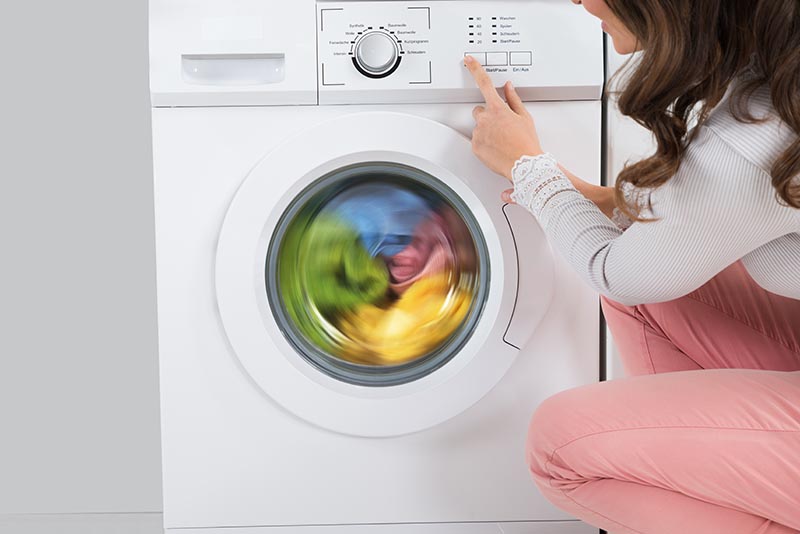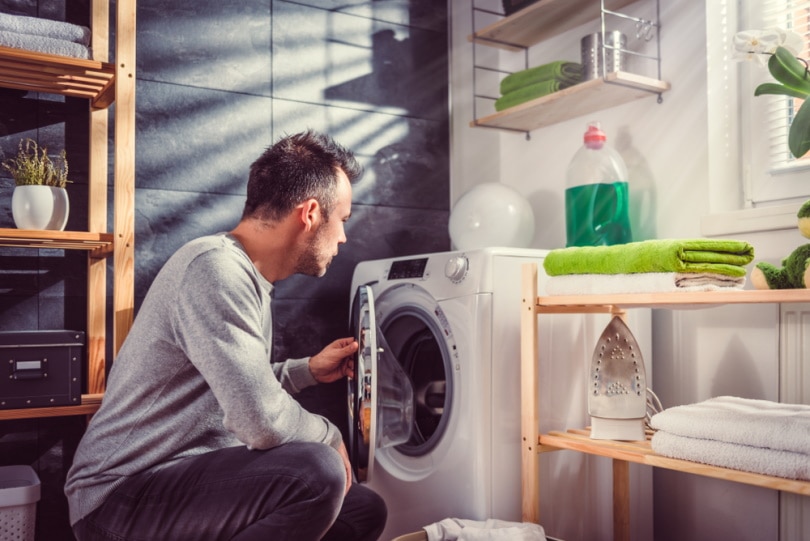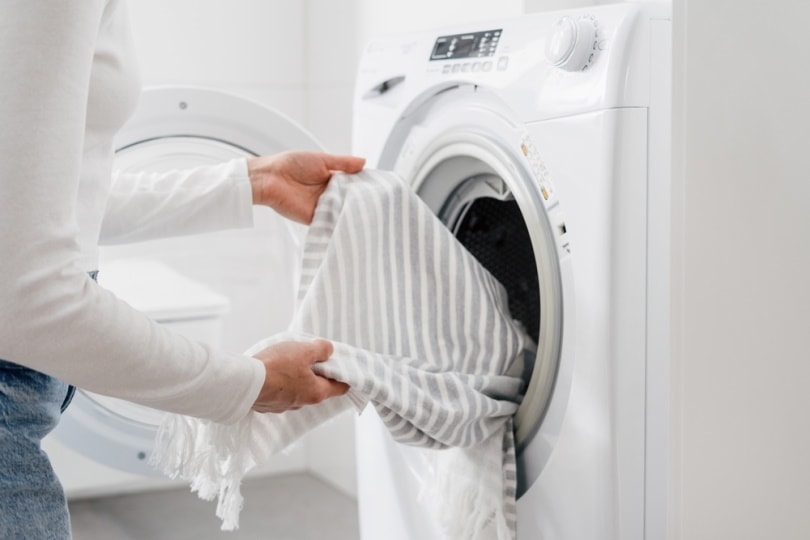What Is a Ventless Dryer? Facts & How It Works
-
Pete Ortiz
- Last updated:

If you’re in the market for a new dryer, one option that you might want to consider is a ventless dryer. But what exactly is it, and when does it make more sense than a traditional vented dryer?
Here, we answer both questions and highlight a few different types of ventless dryers. While they might not be quite as common as vented dryers, they might save you frustration and money.
How Does It Work?
A typical dryer uses a vent system to pump the moisture-filled hot air out of the dryer. A ventless dryer obviously can’t do this. So, what does it do? The exact process varies depending on the exact ventless dryer that you look at, but they’re all quite similar.
In short, a ventless dryer uses a heat exchanger to cool down the hot air, and as the air cools, it turns the gas water molecules back into a liquid. From there, the heat exchanger has an element that collects and stores moisture. This is a manual collection point that the user needs to drain to keep the water from overflowing and the dryer in good working order.

What Are the Different Types of Ventless Dryers?
There are two main types of ventless dryers, and they differ in how they cool down the hot air. The first type is a condensation dryer. It works in a continuous loop to both heat and cool the air inside the dryer.
The process starts with the dryer pulling in and heating air from the room. The dryer passes this heat over the clothes, drying them out. Then, instead of venting the air outside, a condensation dryer pushes the warm air to a heat exchanger.
The heat exchanger cools the warm air, gathers the moisture, and sends it to a collector. From there, it reheats the air and starts the process over again.
The second type of ventless dryer uses a heat pump. The process is similar to that of a condensation dryer, but instead of pulling in cool air and heating it, a heat vent dryer actively pulls in hot air from the room.
From there, the process is the same, but a heat pump dryer doesn’t have the same type of heating element that a condensation dryer has.
Where Is It Used?
Ventless dryers are common in apartment buildings because there isn’t always a vent system in place throughout the building. You can also find them in RVs and other mobile homes.
Ventless dryers enable someone to turn any room into a laundry room without the need to find a way to put in ventilation, which is a huge advantage.
But keep in mind that even if a building has everything necessary for a vented dryer, someone could install a ventless dryer there instead. You can find ventless dryers just about anywhere, even if vented ones are more popular.

Advantages of a Ventless Dryer
The first advantage of a ventless dryer is its space requirements. Since you don’t need a vent system, you can install it in more locations, and it’s much easier to set up.
Second, these dryers are more energy efficient than standard vented dryers. They recycle heat, which uses less energy than constantly reusing heat. Finally, since ventless dryers don’t get quite as hot as standard dryers, they tend to be gentler on clothes and can help them last longer.
Disadvantages of a Ventless Dryer
While there are many advantages to ventless dryers, they’re far from perfect. One of the most notable drawbacks is that they take longer to dry clothes and typically have smaller capacities than typical dryers.
They also cost more up front and create standing water, which can lead to extra humidity in smaller areas. Finally, if you don’t keep up with frequent cleanings of the water collection point, it can lead to mold growth.
Frequently Asked Questions (FAQ)
Now that you know more about ventless dryers, here are the answers to a few of the most frequently asked questions about them.
Do Ventless Dryers Increase the Risk of a Fire?
No. While it’s a common belief that ventless dryers are more prone to catching fire because they have nowhere to pump the heat, that’s simply not the case. Ventless dryers use different technologies to handle hotter temperatures, and they are completely safe.
Do Ventless Dryers Still Have a Lint Trap?
Yes! Another myth with ventless dryers is that they either leave more lint on your clothes or pump lint into the air. But they use the same style of lint trap that you find on vented dryers, and it’s just as effective at catching and storing lint.
How Long Do Ventless Dryers Take To Dry?
Ventless dryers do take longer to dry clothes compared to vented dryers. But while people claim that this is because they’re inefficient, that’s just not the case. Ventless dryers don’t get as hot as standard vented dryers, so it takes them longer to dry clothes.
The exact drying time depends on the size of the load, but you can expect a load that would take 60 minutes to dry in a standard dryer to take about 90 to 105 minutes to dry in a ventless dryer.

A Quick Reference Guide
- You don’t have standard vents
- You have a small family
- You want energy savings
- You have vents in place
- You have a large family
- You want your clothes to dry faster
Conclusion
Now that you know more about the dryer options available, it’s time to pick out the perfect dryer for your needs. A ventless dryer might be an excellent choice for your home, but if you do a large amount of laundry or have a big family, the long drying times might be frustrating.
But now that you know what’s out there, you can find the perfect dryer for your home and needs!
Featured Image Credit: Andrey_Popov, Shutterstock
Contents


